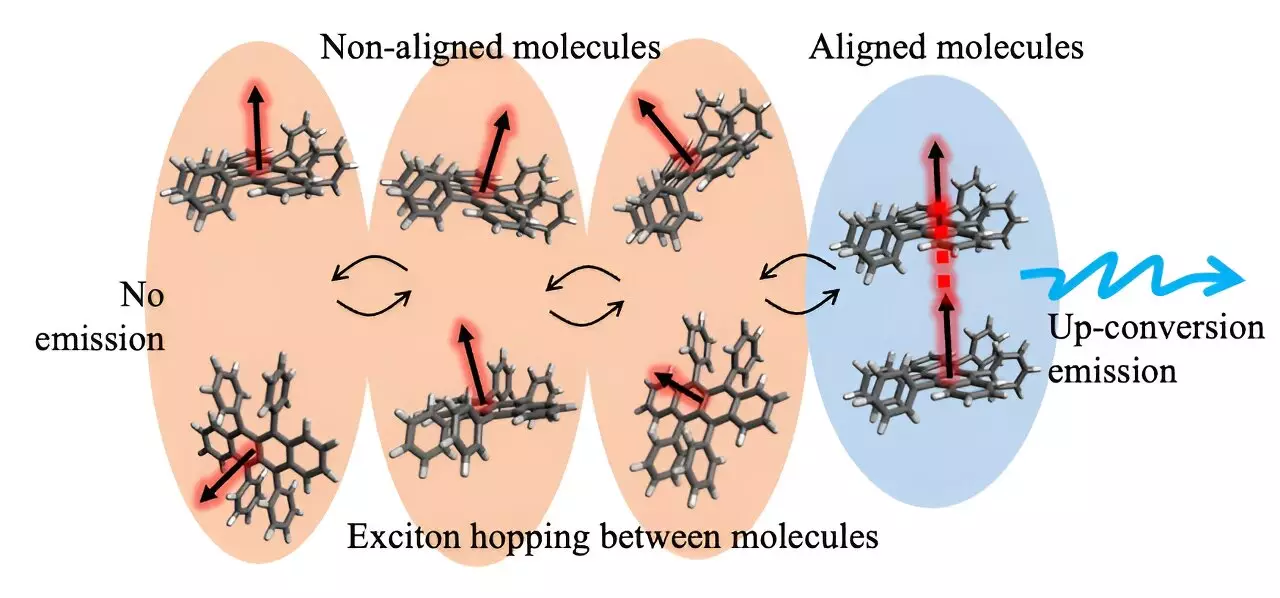Efficiently combining low-energy photons into a high-energy photon is crucial for various technological advancements, including photovoltaic cells, OLED displays, and even anti-cancer therapies. The ability for energy to move freely, but not too quickly, between molecules in a solid material is essential for this process to occur effectively. Researchers worldwide are actively working on developing materials that can achieve this up-conversion, but the microscopic mechanism behind this phenomenon has been a significant challenge until now.
Kobe University photoscientist Kobori Yasuhiro and his research group have made a breakthrough in understanding the electron spin states’ impact on the up-conversion process. By focusing on the electron spin states of triplet excitons in solid-state materials, they were able to observe how the alignment of these states is crucial for transferring energies to a single light-emitting molecule efficiently. This alignment depends on the relative orientation of the molecules involved in the process, highlighting the importance of molecular structure in photon up-conversion.
The research conducted by Yasuhiro and his team, published in The Journal of Physical Chemistry Letters, sheds light on the dynamics of electron spin states within up-conversion materials. By studying the time evolution of these states and modeling their motion, they developed a new theoretical model that explains how the electron spin state influences the up-conversion process. This newfound knowledge provides a guideline for designing highly efficient photon up-conversion materials based on a deep understanding of the microscopic mechanisms at play.
The implications of this research extend beyond the realm of energy conversion. Yasuhiro notes that this knowledge can also be applied to fields such as photodynamic cancer therapy and diagnostics that utilize near-infrared light for optical up-conversion. By harnessing the insights gained from studying electron spin states in solid-state systems, researchers can develop innovative materials that have the potential to revolutionize a wide range of applications.
The discovery of the importance of electron spin states in the up-conversion process opens up new possibilities for designing highly efficient materials for various technological advancements. By understanding how triplet excitons align and transfer energies within solid-state systems, researchers can pave the way for the development of more effective photovoltaic cells, displays, and medical treatments. This research not only addresses a long-standing knowledge gap but also provides a roadmap for future innovations in photon up-conversion technology.


Leave a Reply